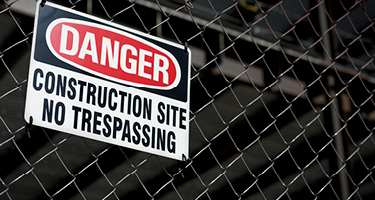Are you a construction worker? Do you work for a construction company? If so, you may not be receiving all the wages you are entitled to. Read this article to learn more about the wage laws, and common wage violations, in the construction industry.
Construction workers play an essential role in our society; they help build, repair, and connect our world. However, construction workers and others employed in the construction industry are often vulnerable to wage violations that result in underpayment. You work long hours and often perform physically demanding job duties, and your Prevailing Wage Attorney at Mansell Law will fight for your right to receive the wages you’re entitled to.
The Fair Labor Standards Act (“FLSA”) governs the payment of wages. The FLSA requires employees to be paid at least the federal minimum wage for all hours worked, and it requires the payment of overtime, at a rate of time-and-one-half the employee’s regular hourly rate, for all hours worked over 40 per workweek. In this article, your Ohio Prevailing Wage Lawyers explain the most common wage violations in the construction industry.
Federally Funded Projects: The Davis Bacon Act
The Davis Bacon Act requires payment of prevailing wages to laborers working on federally-funded construction projects. These projects involve building, altering, or repairing public buildings or public works, such as buildings and highways. The “prevailing wage” is the average wage paid to workers performing similar job duties in the same geographic area. The Davis Bacon prevailing wage determinations for your industry and location can be found here. The Davis Bacon Act also requires the prevailing wage determination for your project to be posted at the job site.
Prevailing wages are typically similar to or slightly higher than your regular hourly rate. Your employer may pay out prevailing wages in one of two ways. It can either pay out the entire amount of the prevailing wage you’re owed as cash wages, or it can combine the value of the cash wages you receive with the value of any bona fide fringe benefits offered. However, laborers and mechanics working directly on the prevailing wage job site must be paid at the prevailing wage rate for all hours they work at the prevailing wage job site. The employer must also pay its employees on a weekly basis for prevailing wage work, since it is responsible for submitting worker payroll records to the job site on a weekly basis.
Overtime Violations
Employees must be paid overtime, at a rate of one-and-one-half times their regular hourly rate, for all hours worked over 40 in a single, seven-day workweek. Some employers try to avoid paying overtime by expanding the seven-day “workweek” to include 14 days and 80 hours. This is unlawful under the FLSA.
Example: Bob gets paid on a bi-weekly basis. On week 1, he works 50 hours, and on week 2, he works 30 hours. Bob MUST be paid overtime for his 10 hours of overtime worked during week 1, regardless of how much he works in week 2. If Bob’s employer pays him for 80 hours total at his regular rate, this is a violation.
If the employee works at prevailing wage job sites, then his or her overtime rate must be calculated according to the applicable prevailing wage rate.
Example: Sue works 50 hours in a week at a prevailing wage job site. Her normal hourly rate is $12.00 per hour, but her prevailing wage rate is $14.00 per hour. Her overtime rate for the week must be calculated using her prevailing wage rate. Thus, her overtime rate for this week of work is $21.00 per hour (1.5 x $14.00).
The formula for calculating overtime gets a bit more complicated if the employee works at several job sites at a time with varying hourly rates. This most often happens when some of the employee’s job sites are prevailing wage sites and some are not. Take the the example with Sue above: she makes $12.00 per hour working on non-prevailing wage job sites, and $14.00 per hour working on prevailing wage work sites. If Sue works 50 hours per week, 30 hours at her prevailing wage rate and 20 hours at her normal rate, how is her overtime rate calculated? Sue’s employer can use one of two options to calculate her overtime rate:
Option 1 – Weighted Average to Determine Regular Rate of Pay
The employer can use a weighted average to determine Sue’s overtime rate of pay:
- Multiply the hours Sue worked in each job duty by the hourly rate for that job duty.
(30 x $14.00 = $420; 20 x $12.00 = $240.00)
- Add the total wages from all duties then divide by the total number of hours worked.
($420.00 + $240.00 = $660.00) then ($660.00 / 50 = $13.20)
$13.20 is the weighted average.
- Multiply the weighted average by 1.5 to get the overtime rate. Then multiply the total number of hours worked in excess of 40 by the overtime rate to determine the total overtime due.
($13.20 x 1.5 = $19.80)
(10 x $19.80 = $198.00 in overtime compensation owed)
Option 2 – Overtime Rate Based on Rate in Effect When Overtime Work is Performed
The second option is for Sue’s employer to pay her one-and-one-half times the hourly rate in effect at the time she performed the overtime work. Using the above scenario, if the last 10 hours Sue worked consisted of 6 hours on a prevailing wage construction site and 4 hours on a non-prevailing wage site, her employer may pay her overtime as follows:
– Prevailing Wage Construction Site: 6 x $21.00 = $126.00
– Non-Prevailing Wage Construction Site: 4 x $18.00 = $72.00
Total Overtime Due = $198.00
Construction workers often run into issues if their employer does not properly document their hours worked or does not separate their hourly rates for each job. Give us a call if you believe your employer has been improperly tracking or calculating your hours worked.
Misclassification as Independent Contractor
Independent contractors are exempt from the overtime and minimum wage mandates of the FLSA. This means their employer is not required to pay them at least minimum wage for all hours worked or pay overtime for hours worked in excess of 40 in a workweek. However, construction workers are often misclassified as independent contractors when they would actually be considered employees under the law. Employers misclassify their workers primarily as a means to save money and avoid the FLSA’s minimum wage and overtime mandates.
Break time
Construction workers often experience delays on the job, either due to the nature of the work they perform or due to the weather. Your employer must adhere to the Ohio breaks laws regarding whether you should be paid during this time. Your employer can require you to clock out for break periods of 30 minutes or more, as long as you are not required to perform work of any kind during this timeframe. However, if the break period lasts 20 minutes or less, it must be paid.
Each situation is different, and a thorough review of the specific facts and circumstances of your situation is likely required to determine if your employer is violating the law. If you believe you have been underpaid, or if you have other questions about your wages or employment, reach out to us today to schedule a free consultation.
Ohio Prevailing Wage Attorneys































